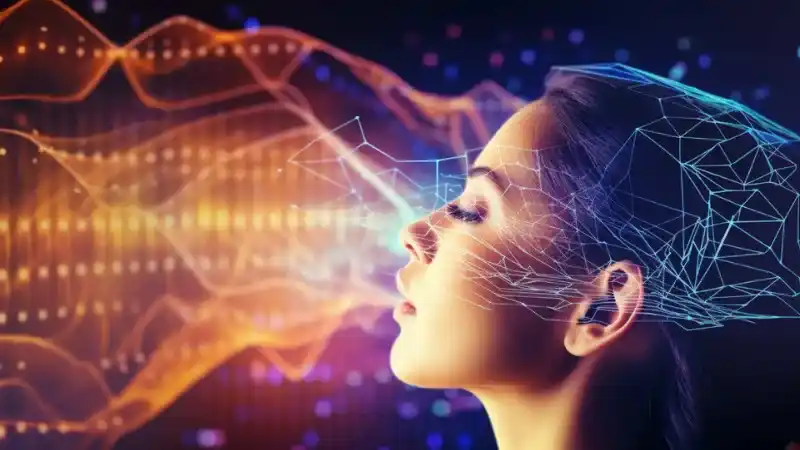Artificial Intelligence (AI) has been revolutionizing various industries, from healthcare to entertainment. One area where AI has gained significant traction is in voice technology. Among the fascinating applications of this technology is the creation of AI voice models that replicate the voices of fictional characters.
A notable example is the development of AI voice models based on characters from the beloved anime series Digimon Adventure. This article delves into the AI voice model of Sora Takenouchi, one of the iconic characters from the series.
Who Is Sora Takenouchi
Sora Takenouchi is one of the original DigiDestined from Digimon Adventure, the classic anime series that debuted in 1999. She is known for her nurturing personality, strong sense of responsibility, and the bond she shares with her Digimon partner, Biyomon. As a character, Sora symbolizes love, and her Crest of Love embodies her core traits. Her role in the series has left a lasting impact on fans, making her a prime candidate for AI voice modeling.
What Is an AI Voice Model
An AI voice model is a digital representation of a voice, created using advanced machine learning algorithms. These models are trained on large datasets of audio recordings to mimic the tone, pitch, and speech patterns of a specific individual or character. AI voice models can be used for various applications, including:
- Voiceovers for videos, games, and animations.
- Personalized virtual assistants.
- Audiobooks and podcasts.
- Preserving iconic voices for future use.
Development of Sora’s AI Voice Model
Data Collection
The first step in creating an AI voice model for Sora Takenouchi involves gathering high-quality audio clips of her dialogue from the anime. These clips serve as training data, capturing the unique nuances of her voice and speech patterns.

Training the Model
Once the audio data is collected, it is fed into an AI framework designed for voice synthesis. Popular frameworks include Tacotron 2, WaveNet, and ElevenLabs’ voice cloning tools. The AI learns to replicate Sora’s voice by analyzing her tone, intonation, and rhythm.
Fine-Tuning and Testing
After the initial training phase, the model undergoes fine-tuning to ensure it accurately replicates Sora’s voice. Developers test the model by generating sample audio clips and comparing them to the original recordings. Feedback from fans and voice actors familiar with the character can also be incorporated to improve accuracy.
Applications of Sora’s AI Voice Model
Reviving Nostalgia
AI voice models can be used to recreate iconic moments from Digimon Adventure, allowing fans to relive their favorite scenes with a new twist. These models can also be integrated into new content, such as games or promotional material.
Interactive Experiences
Imagine interacting with Sora Takenouchi in a virtual reality (VR) environment or hearing her voice as part of a smart assistant. AI voice models make these experiences possible, adding a layer of immersion and personalization.
Fan Projects and Content Creation
Fans of Digimon can use Sora’s AI voice model to create fan-made animations, audio dramas, or YouTube videos. This democratizes content creation, empowering fans to bring their creative visions to life.
Ethical Considerations
While AI voice technology offers exciting possibilities, it also raises ethical concerns. Key issues include:
- Consent: Ensuring that voice actors who originally portrayed Sora give permission for their voices to be replicated.
- Misuse: Preventing the use of AI voice models for malicious purposes, such as creating fake content or impersonations.
- Copyright: Addressing legal questions surrounding the ownership of AI-generated voices based on fictional characters.
The Future of AI Voice Models in Anime
The future of AI voice models in anime is brimming with possibilities. As AI technology continues to evolve, it opens doors for creative storytelling and character preservation in unprecedented ways. For instance, anime studios can use AI voice models to breathe life into long-forgotten or dormant characters, allowing them to appear in new stories without the constraints of needing the original voice actors. This technology can also be utilized to produce multilingual versions of anime, where characters retain their unique vocal identity across languages.

Moreover, AI voice models could play a pivotal role in the creation of interactive anime experiences. With advancements in virtual reality (VR) and augmented reality (AR), fans could engage with their favorite characters in immersive environments, guided by authentic AI-generated voices. These models could even enable dynamic, unscripted conversations with characters, making interactive storytelling more personal and engaging.
The democratization of AI tools will also empower independent creators to experiment with anime-inspired content. Fan-made projects, indie games, and community-driven narratives can feature professional-quality character voices, fostering a deeper connection between creators and audiences.
Enhancing Accessibility and Education Through Anime Voice Models
AI technology also presents opportunities for accessibility. For instance, AI voice models could help bring anime to visually impaired audiences by narrating descriptions of scenes and actions in the style of beloved characters. Additionally, AI-driven voiceovers can be used to educate and entertain, integrating anime characters into language learning apps or other educational platforms.
However, the integration of AI voice models must be balanced with ethical considerations. Transparency, fair compensation for voice actors, and the prevention of misuse will remain critical as this technology becomes more mainstream. With thoughtful implementation, AI voice models have the potential to redefine how anime is produced, consumed, and experienced by fans worldwide.
The creation of an AI voice model for Sora Takenouchi exemplifies the potential of AI in preserving and reimagining beloved characters. By combining cutting-edge technology with the timeless appeal of Digimon Adventure, developers can create immersive experiences that resonate with fans old and new.
As AI continues to advance, the possibilities for storytelling, interaction, and accessibility within anime are boundless. However, as we embrace these innovations, it’s crucial to address the ethical and legal challenges to ensure responsible use of AI voice technology. By doing so, we can ensure that the future of anime remains as inspiring and impactful as its past.

